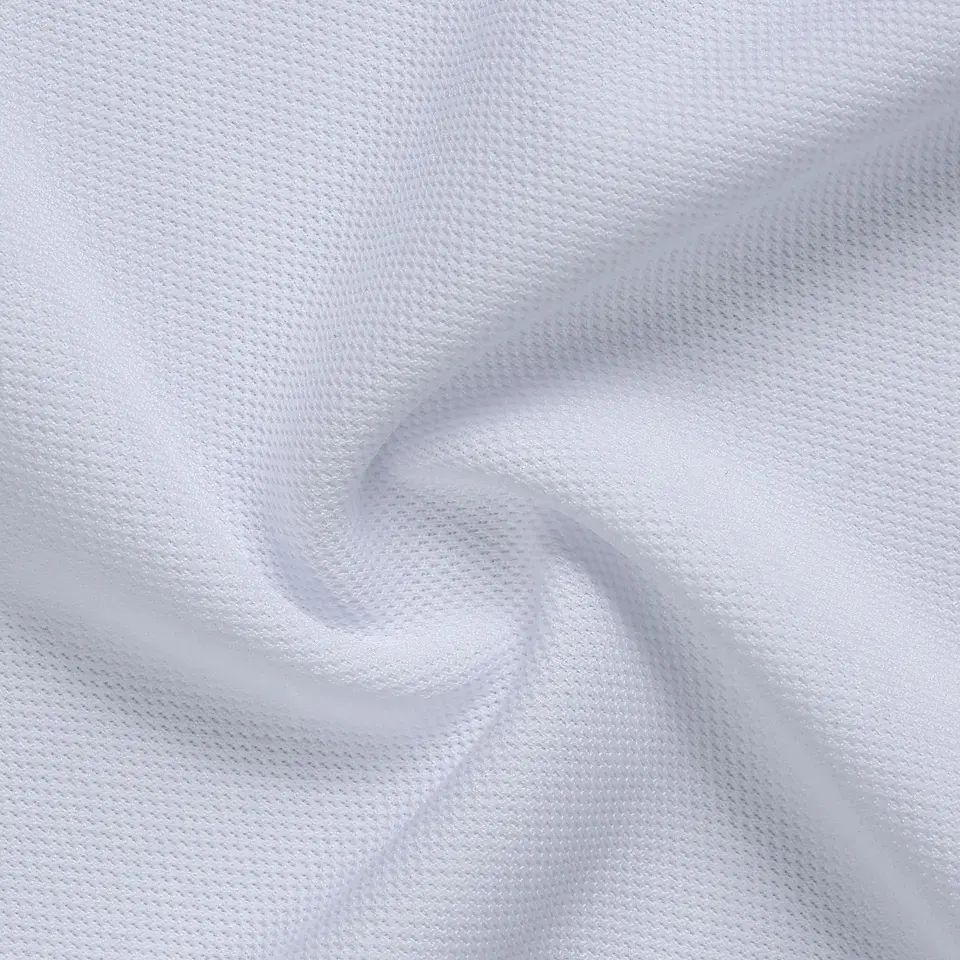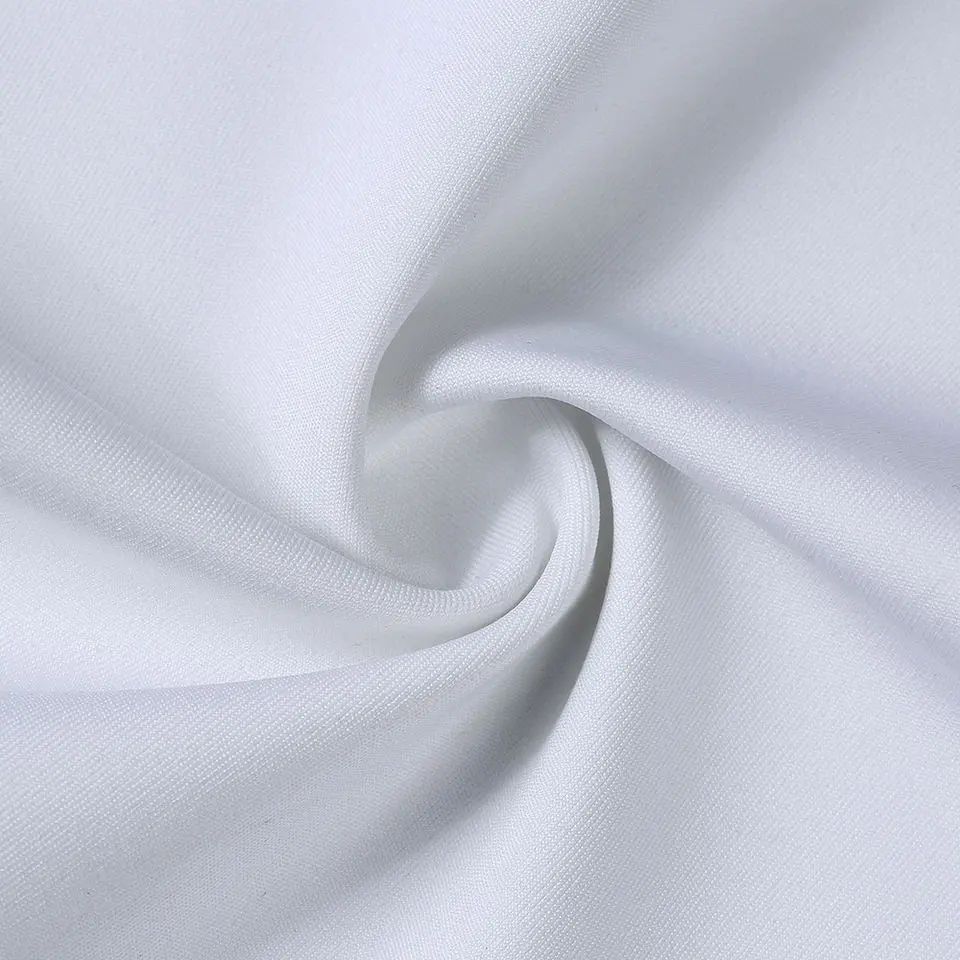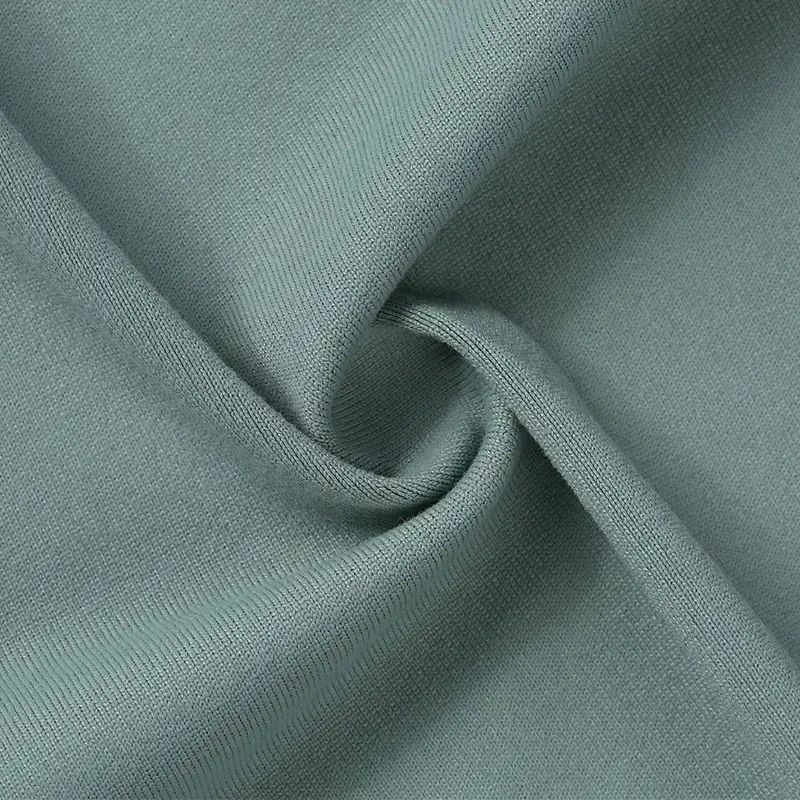What Is the Most Sports Fabric Used by Fabric Supplier
Sportswear fabric is the unsung hero of athletic performance. Designed to withstand the rigors of intense physical activity, sports jersey fabric is engineered with precision, blending innovation with functionality to meet the diverse needs of athletes across various disciplines.
From moisture-wicking properties that keep sweat at bay to breathable materials that enhance airflow, sportswear fabric is meticulously crafted to regulate temperature and keep athletes cool and dry. Stretchable and durable, it provides the flexibility needed for unrestricted movement, allowing athletes to push boundaries without feeling constrained.
The sports fabrics on the sportswear market that qualify as athletic apparel are showing as below
1.Polyester
2.Nylon
3.Spandex (Lycra)
4.Merino Wool
5.Bamboo
6.Cotton
7.Polypropylene
And among most fabric suppliers, the following are most commonly used
●Polyester
●Nylon
●Spandex (Lycra)
●Bamboo
●Cotton
How much of the sports fabric supplier’s market share the fabric represents depends on the overall market demand for sportswear. All of these fabrics meet the basic performance requirements of sportswear, while the cost is more cost-effective compared to other premium fabrics.
The following is a general differentiation of these fabrics
1. Polyester
100% Polyester fabric is a synthetic material that is commonly used in sportswear due to its excellent properties that make it well-suited for athletic activities. One of the most commonly used is bird eye mesh fabric. Here are some key characteristics and benefits of polyester fabric in sportswear.
●Moisture-wicking
●Quick-drying
●Durability
●Lightweight
●Breathability
●UV protection
●Color retention
2.Nylon
Nylon, which equal to Polymer fabrics, another synthetic fabric commonly used in sportswear.
It is known for its strength and durability, making it ideal for high-performance athletic gear. Nylon (Nylon spandex) is a synthetic polymer known for its strength, elasticity, and durability, commonly used in fabric production. Here are some key points about nylon fabric:
●Durability
●Elasticity
●Lightweight
●Moisture Resistance
Care Instructions
Washing: Nylon sportswear fabric Should be washed in cold water with a mild detergent to preserve elasticity. Avoid fabric softeners.
3. Spandex (Lycra)
Spandex, also known as Lycra or elastane, is a stretchy fabric known for its exceptional elasticity that provides excellent flexibility and range of motion. It is often blended with other fabrics to give sportswear a snug and comfortable fit. Spandex fabric is a game-changer in the textile industry due to its unique properties that combine comfort, durability, and flexibility, making it an essential component in a wide range of garments.
Here are the key aspects of spandex fabric:
●Elasticity: Can stretch up to five times its original length, providing superior elasticity. But avoid loss of elasticity due to high temperatures.
●Recovery
●Lightweight
●Moisture Wicking
●Smooth and Soft: Provides a smooth, soft texture that is comfortable against the skin.
Care Instructions
Should be washed in cold water with a mild detergent to preserve elasticity. Avoid fabric softeners.
5. Bamboo
Bamboo fabric is a natural material that is soft, breathable, and moisture-wicking. It is eco-friendly and offers natural UV protection, making it a popular choice for sportswear.
Bamboo fabric, made from the fibers of the bamboo plant, is gaining popularity due to its eco-friendly properties and versatility. Here are the key aspects of bamboo fabric:
Composition and Properties.
●Natural Fiber:
●Softness
●Breathability
●Moisture-Wicking
●Antibacterial
●Hypoallergenic
●Biodegradable
●Care Instructions
Attention
Typically machine washable on a gentle cycle with mild detergent. Avoid using bleach.
6. Cotton
While not as commonly used in high-performance sportswear, cotton is still used in some athletic clothing for its comfort and breathability. However, cotton tends to absorb moisture and can become heavy and uncomfortable during intense physical activity.
Cotton fabric is one of the most widely used and versatile textiles globally, known for its comfort, breathability, and natural origin. Here are the key points about cotton fabric
●Natural Fiber
●Softness
●Breathability
●Moisture Absorption
●Hypoallergenic
●Durability
●Biodegradable
Care Instructions
Washing: Machine washable in warm or cold water. Pre-shrunk cotton items have less risk of shrinking.
Cotton fabric’s natural comfort, versatility, and durability make it a staple in the textile industry. Its wide range of applications, from everyday clothing to specialized medical textiles, highlights its importance and adaptability. Choosing organic cotton can further enhance its eco-friendly benefits, making it a responsible choice for environmentally conscious consumers.
7. Polypropylene
Polypropylene is a moisture-wicking fabric that is lightweight and breathable. It is often used in base layers for sports that require intense physical activity.
It is also known for its various functional properties and is widely used in numerous applications. Here are the key aspects of polypropylene fabric:
●Lightweight
●Durability
●Moisture Resistance
●Chemical Resistance
●Breathability
●Non-toxic and Hypoallergenic: Safe for use in medical and hygiene products, which is the characteristic that distinguishes it from other fabrics.
Care Instructions
Can generally be machine washed with cold water; avoid high-heat drying.
Post time: May-24-2024





